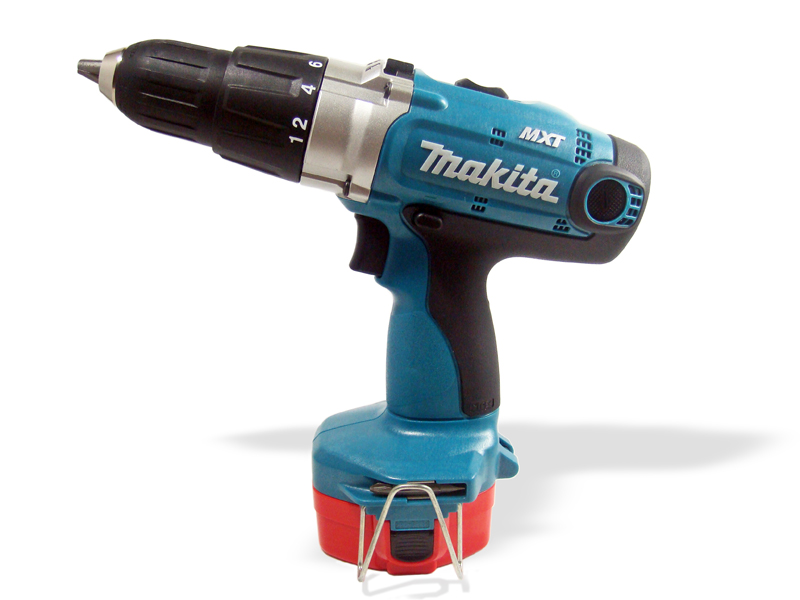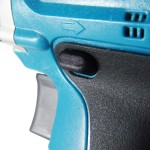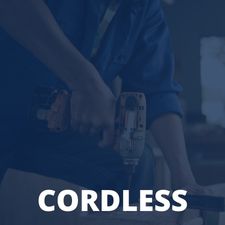The Best Cordless Drills Australia Has To Offer, Information, Buyers Guides, Comparisons and Reviews
– Cordless Drill Features
– Cordless Drill Accessories
– What Cordless Drill To Buy
– Battery Powered Drill Operating Tips
The cordless drill is the most popular power tool in the world. Its versatility, portability and ease of use make it an essential tool for both the home and the workplace. This guide will provide you with all the information you need to select the best cordless drill for you.
Cordless drills can be divided into two categories; drill drivers and hammer drill drivers.
Cordless Drill Drivers
Cordless drill drivers are used for drilling into wood, metal and plastic, and are also great to use for general purpose screw driving (for screw driving into metal, it’s advisable to use an impact driver).
They vary in size, voltage, and power, but are generally quite compact and lightweight.
Check Out The Complete Range Of Cordless Drill Drivers
Cordless Hammer Drill Drivers
The defining feature of a cordless hammer drill driver (also known simply as a cordless hammer drill) is its ability to drill through masonry. They also have all the capabilities of a cordless drill driver.
The ‘hammer’ in their name is derived from the ‘hammer action’ they employ to drill through masonry. This function enables the drill to produce rapid vibrations that chip away at masonry work whilst the chuck continues to rotate.
The ‘hammer action’ is produced by two metal plates connected to the drill’s drive shaft that have opposing raised edges. These plates connect when pressure is applied to the chuck, and as the chuck rotates, these plates rapidly move the drive shaft back and forth. Therefore, the faster the drill rotates, the faster this ‘hammer action’ is, and the faster it becomes to drill through masonry. The rating on hammer drill drivers to indicate the maximum speed of this ‘hammer action’ is the blows per minute (bpm). A cordless hammer drill can attain approximately 30,000bpm (depending on the model).
Features Of Cordless Drills
Cordless drills feature many different components, and having a sound understanding of these plays an important part in purchasing the best cordless drill for you. Knowledge of these parts also aids in the efficient and effective use of the tool.
Power Source Of A Cordless Drill
The power source is the component that provides the tool with electricity. On a cordless drill, this is in the form of a rechargeable battery.
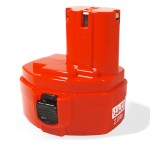 The voltage of the battery that the drill requires to operate will determine the approximate power and weight of the drill.
The voltage of the battery that the drill requires to operate will determine the approximate power and weight of the drill.
- 7.2V, 9.6V, 10.8V, and 12V drills are designed for light duty applications that do not require excessive power or speed.
- 14.4V, 15.6V, 18V, and 21.6V drills are designed for medium duty applications and serve as great general-purpose drills that easily accomplish most tasks. The two most common voltages are 14.4V and 18V.
- 28.8V, 36V, and 48V drills basically exhibit the power of a corded power tool. They are designed for heavy-duty applications where portability is paramount. The most common is 36V.
The voltage of a cordless drill is determined by the batteries that the drill is designed to accommodate. As a general rule, the higher the voltage, the more power and speed the drill will be able to produce (simultaneously).
The voltage of a battery doesn’t necessarily indicate the specific power that the tool will output. This is dictated more by the quality and design of the tool’s internal components, especially the transmission. It is therefore quite common to find a high quality 14.4V tool that is more powerful than a low quality 18V tool.
Cordless hammer drills are not available in voltages lower than 14.4V, and are usually more robust than drill drivers. This is mainly because they have to house more internal components, and must also be able to deal with the vigorous forces associated with hammer drilling.
Some cordless drills will have battery indicators that show you how much fuel you have left in the battery’s tank.
For more detailed information on the types of rechargeable batteries used on best cordless drills and power tools, simply click here.
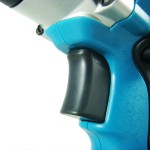 Switch
Switch
The switch allows the electricity from the power source to flow through the tool. All cordless drills have a variable speed trigger switch. When this trigger is pressed, the drill will begin to operate, and the further you depress this trigger, the faster the drill will rotate.
Forward/Reverse Switch
With a flick of this switch, the drilling direction changes to allow for forward and reverse motion (right and left motion respectively). This feature is found on all cordless drills, and can be very helpful if you need to remove screws, or if you need to release your drill bit after it has jammed in a hole.
If flicked between forward and reverse in a neutral position, it also locks the switch to prevent accidental operation of the tool.
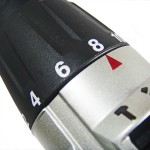 Clutch Collar
Clutch Collar
The clutch collar is very useful for repetitive screw driving, and allows screws to rest at a particular height. It is found on all cordless drills, and is activated by simply selecting a number, known as a torque setting (usually a number between 6 and 24). The numbers act as a fraction of the maximum torque possible, and when the desired torque is reached the chuck ceases to rotate.
The more torque settings (the numbers on the clutch collar) the drill has, the more likely it is that a correct setting will be found for the respective screw driving application.
 Mode Switch
Mode Switch
On cordless drills, the mode switch allows you to choose between screw driving, normal drilling and hammer drilling.
The mode switch on cordless drills is commonly integrated into the clutch collar. This means that if the application requires constant changing between screw driving and drilling (or hammer drilling) modes, the clutch collar has to be constantly twisted back and forth. To counter this action, the best cordless drills have a separate mode switch. This means that screw driving and drilling modes can be changed with the flick of a switch. This can greatly reduce wear and tear on the drill’s components, and significantly increase productivity. Separate mode switches are not found on models with a voltage lower than 14.4V.
The symbols found on a cordless drill’s mode switch are illustrated and described below.
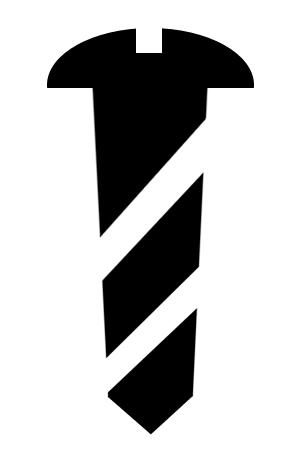 | 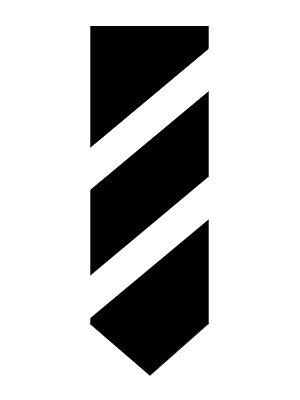 | 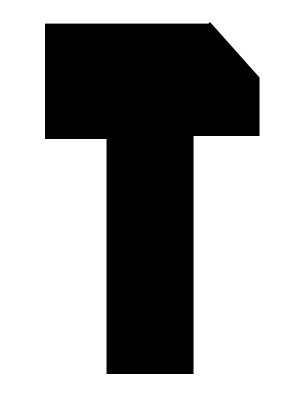 |
|---|---|---|
Once this mode is engaged, the use of the drill's clutch collar is enabled. | This mode disables the drill's clutch and allows for powerful rotary drilling. | This mode engages a cordless hammer drill's hammer action. |
Cordless Drill Motors
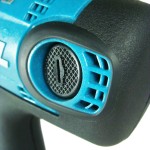 Motors are the main component of all power tools, and are the component that converts the electricity into motion. The power that motors produce is measured in Watts (W). Motors used in cordless drills are called DC motors.
Motors are the main component of all power tools, and are the component that converts the electricity into motion. The power that motors produce is measured in Watts (W). Motors used in cordless drills are called DC motors.
Some manufacturers state the output wattage that a cordless tool produces (UWO, or Unit Watts Out). This is an excellent way of deciding on the best cordless drill.
Most professional quality tools will have a round port on either side of their housing. These ports give simple access (with a slotted screwdriver) to the most frequently wearing component of any tool – it’s brushes. The best cordless drills on the market (and the most advanced) have brushless motors that create virtually zero maintenance. This complex motor design may however increase service costs over the tool’s life.
Some models will also have an electric brake. This causes the tool to stop as soon as you release the trigger switch, and mainly prevents you from overdriving and stripping screws.
If it is both a compact and powerful cordless drill you seek, look for a model with a 4-pole motor. This motor delivers the same amount of torque as a regular 2-pole motor of the same size but in a smaller package. This is due to the increased magnetic flux density a 4-pole motor delivers.
 Transmission
Transmission
Also known as a gearbox, transmissions dictate the speed range (revolutions per minute, or rpm) that a drill can operate at, and the corresponding torque (or turning force) that it can produce.
Transmissions can contain single or multiple gears that are driven by the motor. If a small gear is used in the transmission, then rotary speed will be high but torque will be quite low. If a large gear is used, then rotary speed will be quite low, but torque will be high.
Cordless drills can have single or multiple gears. The best cordless drills have multiple gears, which creates a much more versatile drill that will no doubt increase efficiency and effectiveness. Cheaper models will only have one gear, whereas high quality models may have up to three or four. On those models with a single gear, torque and speed are balanced for optimal drilling and driving effectiveness. Those with multiple gears feature more torque in their lower gears, and more speed in their higher gears. If a cordless drill has multiple gears, there will be a numbered gear switch at the top of the drill.
Most manufacturers will only make cordless drills with a maximum of two gears. This enables a good choice of speed and power, but prevents consumers from using a third or fourth gear for every application, in spite of differing circumstances. If this is done, it will generally result in the stripping of a specific gear, subsequent warranty claims, and a blemish on the manufacturer’s reputation.
Cordless drill accessories come in many different sizes, and all have a recommended speed that they have been designed to operate at. To accommodate these requirements, you must have a drill that has both enough torque and enough speed to handle the accessory.
To acknowledge this fact, manufacturers will state the maximum drilling capacities that a drill is capable of drilling into various materials. Drilling capacities vary wildly across models, but a cordless drill can be capable of drilling up to 65mm diameter holes in wood, 13mm holes in steel, and 16mm holes into masonry (only on cordless hammer drills).
The optimum drilling capacities of drills are where they will deliver their best performance. If you halve the drill’s maximum drilling capacity, it will give you the optimum drilling size, and is the size of hole you should be most frequently drilling with that drill. These maximum drilling sizes depend on the specific model of the drill, and it is recommended that you consult these specifics before making a purchase.
Torque (turning force) defines the screw driving strength of a drill. It’s a debatable value to base a decision upon, as eachmanufacturer uses different methods to measure it. Nevertheless, cordless drills are known to reach maximum fastening torques of 80 Newton-metres (Nm).
If you would like the most powerful type of cordless drill, search for those models with a planetary transmission. These are the most powerful type of transmissions and are generally found on the heavier cordless drills with very chunky housings.
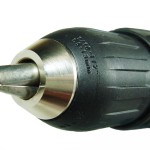 Chuck
Chuck
The chuck is the part of the drill that grips drilling accessories. The transmission powers the drive shaft and on the end of this shaft is the chuck. All cordless drills have keyless chucks.
Keyless chucks are fast to use, and can be operated completely by hand. Depending on the quality and purpose of the drill, these chucks can be plastic or metal, or a combination of the two, and usually have a front and rear sleeve. To loosen/tighten the chuck manually, place one hand on the rear sleeve of the chuck and turn the front sleeve right/left. To do this with the aid of the drill, hold the front sleeve of the chuck while you apply some reverse/forward acceleration to the drill.
Some higher quality keyless chucks will also have a locking and/or ratcheting feature when you tighten them so the chuck will never come loose during operation.
The keyless chucks on cordless drills can be metal or plastic, and can have either a 10mm (3/8”) or 13mm (1/2”) capacity, depending on the voltage and maximum drilling capacities of the particular model. Most cordless drill chucks are capable of holding down to a 1mm drill bit.
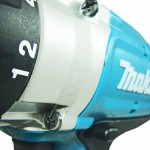 Housing
Housing
The housing of a drill is the casing that protects the internal components.
Cordless drills will have either a clamshell housing, or a jampot housing.
A clamshell housing is where the housing is manufactured in two plastic halves, and where these halves are fixed together around the internal components.
A jampot housing is where the internal components of the drill are inserted into the housing and then a lid (usually an alloy casing) is screwed down to seal it. This durable style of housing is generally used on the best cordless drills, and is much more effective at keeping the internal components aligned and the power tool structurally sound.
Some cordless drills will have an LED light at the front of their housing that light up the material upon operation of the tool, and some may have a small magnetic pad to keep extra bits handy.
Others may also have spirit level vials built into the top and/or rear of their housings that allow you to ensure you are drilling at a 90° angle to the material.
 Handle
Handle
The handle is the component of the drill that you hold with your dominant hand and is what you use to apply pressure to the drill.
On cordless drills, the handle is called a pistol-grip handle, and is commonly covered by rubber for user-comfort.
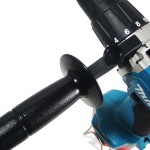 Side Handle
Side Handle
This handle is designed to stop rotation and to provide stability for the user, and is only found on heavier duty cordless drills. It is secured just behind the chuck and can be positioned at various angles to the body.
Different models of cordless drills are made to different specifications. A simple way to gauge the power of different models (in particular models of hammer drill drivers) is to see whether a side handle is included. If not, it is most likely a light duty model that doesn’t have enough power to warrant the use of a side handle.
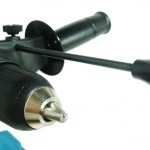 Depth Stop
Depth Stop
The depth stop is a small plastic or metal rod that sits in the side handle, and can be set to certain lengths in front of the drill to monitor the depth of holes.
This is especially useful if you are drilling holes where the drill cannot go through the material or if you need to drill holes of a certain depth.
Cordless Drill Accessories
Accessories that can be used in cordless drills are the same accessories that can be used in electric drills. For a comprehensive list of these accessories, please click here.
What Cordless Drills To Buy
Check Out The Complete Range Of Cordless Drill Drivers
Check Out The Complete Range Of Cordless Hammer Drills
When purchasing the best cordless drill for you, decide what features are most important to you (from the features above) and make sure these are included in your final purchase. The main considerations you should make include how much power you require, the size and weight of the tool, and how often you will be using it.
For most users, a two geared cordless drill of at least 14.4V will be capable of completing the current job at hand and most future jobs that may arise. It is also a good idea to ensure you purchase a model that includes two batteries.
Manufacturers will either direct their products at the DIY or professional market. DIY tools are designed for home use and generally include plenty of features for a very modest price. They also tend to have very generous warranty periods, including replacement warranties. Professional tools are designed for commercial use and are built for durability, performance, and reliability. Their warranty periods tend to be much shorter than DIY tools, and are exclusively repair warranties. The main advantage of these tools is that they should well outlive their warranty period, and if they require repair and maintenance spare parts are readily available.
The price of any tool will depend on the quality, capabilities, and features of the model. Bear in mind that at least one of these three elements is commonly sacrificed by manufacturers to reduce the tool’s price and increase its sales. After all, price is the most important factor for consumers.
Cordless drills can cost anywhere from $20 to $1000.
It is important to bear in mind that the entire cost of any power tool is not just it’s initial purchase cost. Added costs can include accessories for the tool to function, maintenance, downtime, and replacement costs. Buying according to your requirements will help to keep these costs to a minimum.
To browse manufacturers of cordless drills, please select a company from our list of power tool manufacturers.
Drill Operating Tips
The following tips will help to preserve the life of your cordless drill, increase your efficiency, and most importantly, keep you safe.
- If the cordless drill has a gear switch, always ensure it pushed fully into the required gear. Failure to do so can result in damage to your drill’s gears.
- You should never change the direction of drive whilst the tool is still operating, as it is highly likely you will damage the tool’s gears.
- Hold the drill firmly to counter any light reaction forces when drilling or driving screws.
- If the bit jams because the power tool is overloaded or it becomes wedged in your work, switch the power tool off immediately. Because of this, you should always prepare yourself for a sudden reaction force when drilling.
Personal protective equipment (PPE) must always be worn when operating power tools. For more information on PPE and power tool safety, click here.
Was this guide helpful? Has anything been left out? Are there any improvements that could be made? Please take a moment of your time and click here to provide your valuable feedback.
« Return to Cordless Tools | Proceed to Cordless Impact Drivers »

